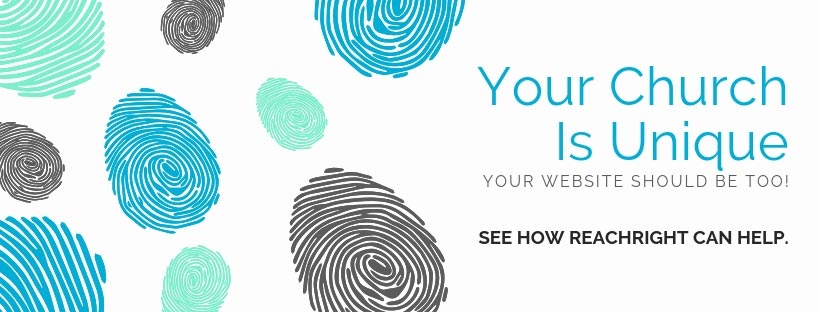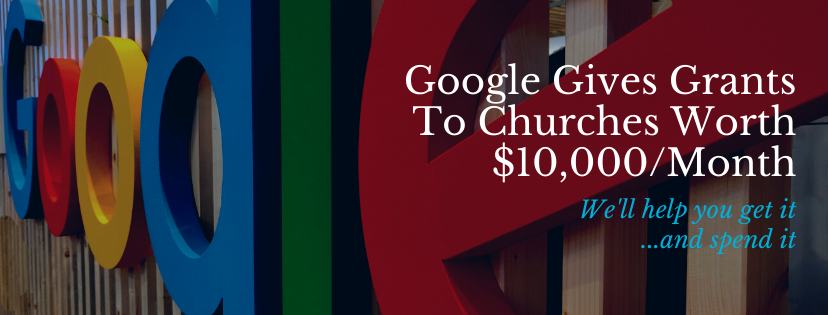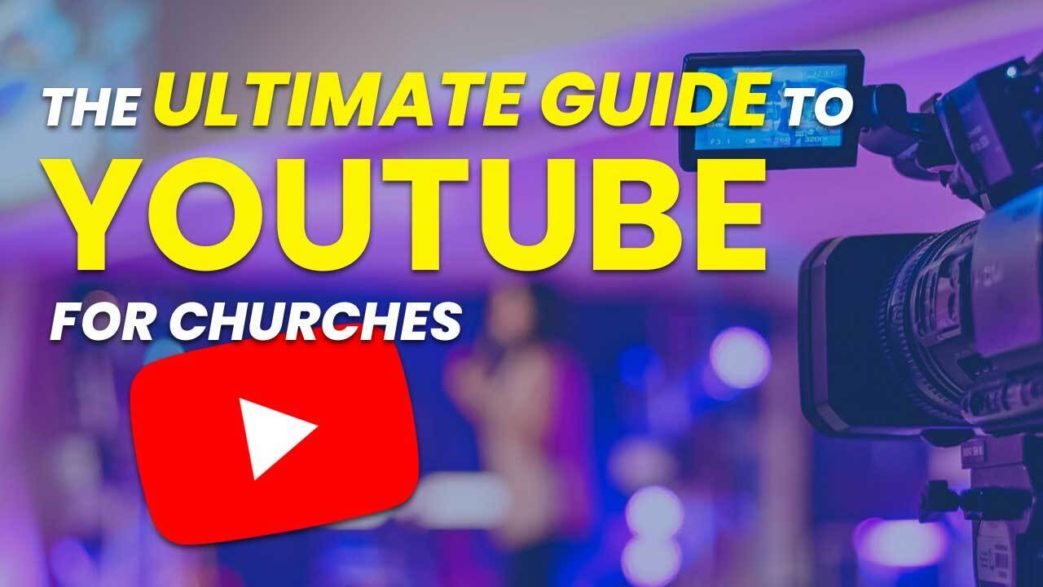Estimated reading time: 11 minutes
Since so many people love watching videos online, it only makes sense to start using YouTube for church. It’s a powerful platform that lets you reach both your local community and millions worldwide.
It’s free to join and use the platform, as long as you abide by YouTube’s rules. Use the site to build your online following and help people worship from anywhere.
While it can seem overwhelming at first, once you learn the basics and figure out what to post, it’s no different than interacting on any other social media platform.
Table of contents
- Overview Of YouTube
- Getting Started On YouTube
- Setting Up Your Church’s YouTube Channel
- Make The Most Of Your Channel Details
- Using YouTube Studio
- Create A Great Channel Teaser Video
- Create A Branded Channel URL When Possible
- Develop Content Ideas And Themes
- Go Beyond Sermons
- Choose The Perfect Video Thumbnail
- Optimize Every Video’s Description
- Create Engaging Video Titles
- Use Hashtags For Optimization
- Make The Most Of Cards
- Pay Attention To YouTube’s Analytics
- Consider Copyright Rules
- Related Links

Overview Of YouTube
If your church is already on Facebook, Instagram or another network, you might wonder why you should bother with YouTube. YouTube is the second most popular social media network and easily the most popular video-based social network. At the time of writing, YouTube has two billion monthly active users and 30 million daily active users. Users watch over one billion videos daily.
It’s also important to note that YouTube reaches a variety of demographics too. Currently, 73% of adults in the United States use the site. As far as ages go:
- 77% of 15-35 year-olds in the US watch YouTube
- 51% of Americans over 75 use YouTube
- 37% of millennials binge-watch YouTube each day
So, no matter what age group your church is trying to reach, they’re probably on YouTube. One other important thing to know about YouTube is it’s the second most popular search engine as well, next to Google, of course. This means people are searching YouTube just as much for information on their favorite topics, include faith.
Getting Started On YouTube
Getting started on YouTube for church is as easy as setting up a normal YouTube account. Since you’re using this for church, you might set up a new YouTube account using a church email address or a Gmail address. Or, if your church is using G Suite, use your official church email account.
From there, you can set up a channel. Your channel is where you upload videos and manage your church’s account. Users follow your channel. You can set up groups of videos, create playlists and more.
Setting Up Your Church’s YouTube Channel
Setting up your church’s YouTube channel is probably the most time consuming part of the process. This is mainly because you need to think about how you want to optimize the details, but more on that coming up next.
The good news is YouTube takes you through a step-by-step process to set up your channel. You’ll be asked for a channel name, picture, description and links to your other social media profiles and website. Make sure you fill out everything. If you don’t have any other social media profiles, you don’t need to link to those.
Remember, you can go back and change any details later on. So, don’t feel pressured to get it just right. In fact, you’ll more than likely change some details later, especially if your church decides to change your YouTube strategy at any point.

Make The Most Of Your Channel Details
As you know, using YouTube for church is all about creating great videos, but first, users need to be able to find your church on YouTube. Your channel details are a great start. Think of these as the foundation for your YouTube SEO strategy. Even though there’s not a lot of text like you’d have on your church website or blog, optimizing your details helps people find you easier.
For instance, think carefully about your channel’s name. It’s easy to want to use an abbreviation or even that sounds cute. However, always use your church’s name. If someone’s searching for your church, this makes you easier to find and recognize.
When it comes to your channel’s header image and icon, ensure they match your current church branding. Using different colors or a different logo than what people are used to could make people think you’re a different church completely. The last thing you want is to make it difficult for even your church’s members to find you.
Also, fill out your description to explain exactly what your church’s YouTube channel is all about. Some churches actually just post something generic, such as “Videos from XYZ Church.” Use some keywords in your description, especially your location. This helps locals find you as well as worldwide viewers.
When you’re going through the initial setup, you won’t see all optimization and customization options. Instead, you’ll have to finish the initial setup and choose Customize Channel on your channel’s main page. This is where you’ll add your branded icon and header, for instance.
Using YouTube Studio
Another option you’ll notice while you’re setting up YouTube for church is YouTube Studio. This is the ultimate YouTube management tool for creators. It’s also a great place to optimize video details, such as the name, description and tags. You’ll want to be as descriptive as possible while using the right keywords to increase visibility.
Check out viewer statistics, manage comments, edit video details, see where traffic’s coming from and much more. While it’s not where you upload videos (you do that from your main YouTube channel page), it is where you can keep track of how well your channel’s performing. Use it to optimize and adjust your strategy as needed.
Create A Great Channel Teaser Video
Once your channel is set up, there’s one more thing you should do before uploading videos – create a channel teaser video. If your church website has a welcome video on the home page, this can be something similar. It’s a welcome video that is the first video users see when they visit your church’s YouTube channel page.
Ideally, have your pastor create a short video around 30 seconds to a minute welcoming viewers. You can also list a few highlights about what makes your channel special, such as any series you plan on uploading or how often you upload.
Even if you plan on creating most of your videos as slideshows, film an actual person for this as it feels more welcoming and makes a great first impression.

Create A Branded Channel URL When Possible
When you first set up your YouTube channel, you have a more generic URL. It’s not something that’s easy to remember. Plus, no one will associate it with your church by the URL alone.
To give people a URL they will remember, set up a branded channel URL. You won’t be able to do this right away though. YouTube has a few rules in place to prevent users from trying to claim a bunch of URLs to sell. Before you can create your own, your channel has to meet the following requirements:
- Be at least 30 days old
- Have at least 100 subscribers
- Upload a banner/header and profile image
Ask your church members to subscribe to your church’s YouTube channel. Encourage your blog readers and social media followers from other sites to subscribe. Even if you’re a smaller church, you can usually get enough subscribers to meet the minimum within a month or two.
Develop Content Ideas And Themes
The next step to getting started with YouTube for church is developing content ideas and themes. After all, you shouldn’t be afraid of the upload button. Creating a strategy helps ensure you never run out of content ideas and you’re able to stay on a posting schedule. Staying consistent is key to keeping and growing an engaged audience.
If you already have a great blog strategy that’s working, start turning some of your top posts into videos. You might invite a few members, staff or fellow church leaders to discuss the topic with you. Create a slideshow highlighting the most important points. Let teens or kids put together a skit that explains the post. You don’t need a video for every post, but popular posts often perform well in video as well as text format.
Some popular ideas that work well include:
- Sermons (you can even use YouTube Live for live streaming church services)
- Special events
- Bible studies
- Q&A from members and viewers
- Volunteers in action
- Behind the scenes footage
- Humorous videos that teach a lesson
- Bible stories
- Interviews
- Discussing major issues facing Christians
- Content just for teens or kids
Go Beyond Sermons
A common rut many churches fall into is just posting sermons. While these are a great addition to your church’s YouTube channel, go beyond just sermons. You want to keep viewers engaged all week. For members who’ve already attended weekly services or watched your sermon on Sunday, you’re not giving them a reason to continue engaging with you the rest of the week.
Try to come up with a few more ideas for weekly videos to mix in with your sermons. This helps increase your reach faster.
Choose The Perfect Video Thumbnail
YouTube tries to choose a video thumbnail for you automatically, but you don’t have to stick with what YouTube chooses. The thumbnail, title and description are what make people choose your video over the rest. With a seemingly endless stream of videos being uploaded every day, you want your content to stand out.
Take a moment to pick a thumbnail that makes people want to see more. If it’s your sermon, you’d want a great thumbnail of the pastor at a particularly enthusiastic moment. Some YouTube channels even create a title thumbnail with their channel’s branding (colors and/or name) to stand out to those who are already followers.
Optimize Every Video’s Description
Next up is optimizing your video’s description. While descriptions can be short or long, you only have two or three sentences that show up in YouTube’s search results. Be concise and descriptive. Try to use a keyword that tells viewers exactly what to expect.
Use the rest of your description to mention your church’s name and location. Talk a little more about the video if possible. You can also link to your church’s website, encourage people to subscribe for more content and list your social media channels (if applicable). Ideally, create a description footer that contains details you want to add to every video you upload. This makes adding a description quicker and easier.
Create Engaging Video Titles
Of course, optimize your video titles. Instead of an uploading that says “Church Sermon April 11th 2021,” make the title descriptive. If your sermon talks about greed, you might title your video “Sermon: Winning The Battle Against Greed.” You can add the date in the first part of your description so viewers know it’s current. The idea is to tell viewers what the video is about before they view it.
The better your title, thumbnail and description, the more likely you are to get more viewers.

Use Hashtags For Optimization
As with most social media networks, YouTube also uses hashtags. These work like every other site. And, as with other sites, only use hashtags that properly fit your video. Skip trending hashtags if they don’t apply to your video.
Pick at least several relevant hashtags for each video. This helps your videos get found by people looking for similar content. They might watch a video from one church, click the hashtag and be taken to a list that features your church’s videos.
Make The Most Of Cards
If you’ve watched many YouTube videos, you’ve probably seen pop-ups during or at the end of the videos to click to see more content or subscribe. These are called cards. Most often, channels use these to suggest a related video on their channel, encourage them to visit a website or ask them to buy something or donate.
Ideally, you should place these within the last 20% of your video or where viewers tend to drop off most often. You can view your video analytics to see when this happens. Backlinko offers a great overview of how cards work along with statistics on the best places to add them.
Pay Attention To YouTube’s Analytics
Always pay attention to YouTube’s analytics. These are the secret to improving your YouTube for church strategy. Learn what is and isn’t working. Learn the optimal length for your audience and which topics perform best. Pay close attention to any trends to see exactly how to improve. You can also view your YouTube comments to see what viewers want more of.
Consider Copyright Rules
Finally, pay attention to all copyright rules. Using content you don’t own, such as music or videos, could get your video taken down and even your account banned if you continue with violations. Most often, violations occur with music. It’s tricky to figure out what you can and can’t use. For instance, if you’re including ads or asking for donations, you might not be able to use the same music you’d use if you weren’t monetizing your videos.
Church Production helps break down some of the murky areas to help your church avoid copyright issues.
Now that your YouTube channel is all set up, make sure you have an engaging church website to send viewers to. Contact us to learn how we can help get your church’s site up and running and even help improve your existing site if you have one.





Comments 2
Great article. Very informative. I have learnt a lot.
Awesome! Feel free to share!